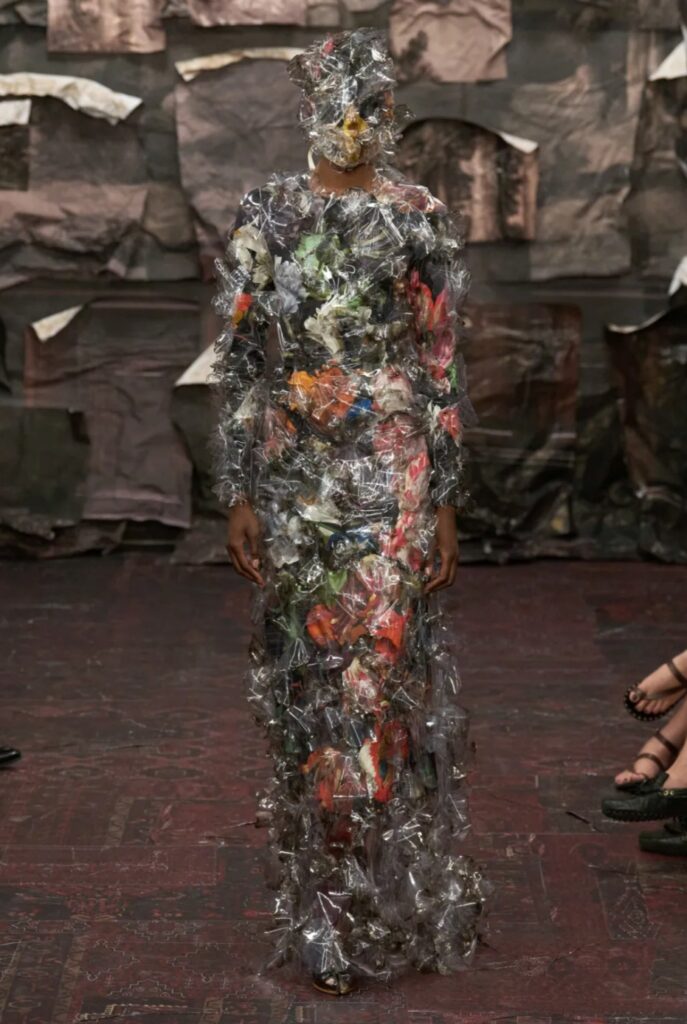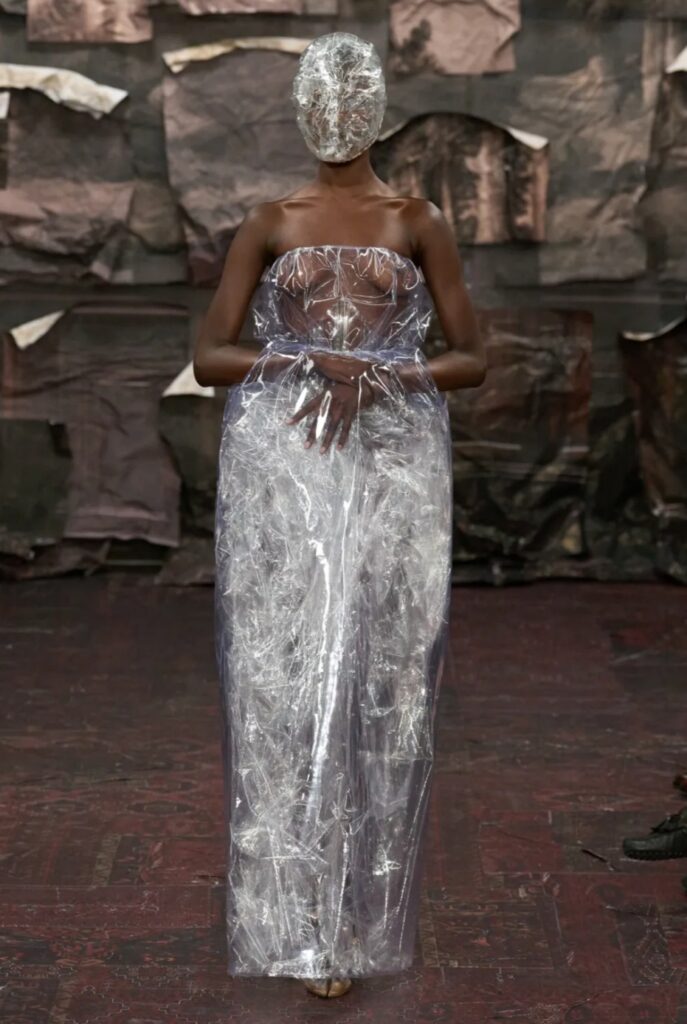Succeeding John Galliano in the delicate exercise of a haute couture runway show is akin to following Freddie Mercury on stage an endeavor that requires as much daring as mastery. Glenn Martens, the latest to step into this demanding arena, did not choose the path of least resistance. As Renzo Rosso, the hedonistic yet clear-sighted entrepreneur, would say: “We all work like madmen.” The times offer little respite to creators.
It was within the brutalist setting of Le Centquatre—Paris’ former municipal funeral servicesthat Martens unveiled his first haute couture collection for Maison Margiela on Wednesday night. The venue itself evokes a Beckettian stage, where the vanity of splendor meets the memory of death. It was here, in 2009, that Martin Margiela orchestrated his own quiet exit, under a rain of golden confetti a baroque farewell where the artist vanished, leaving only his work behind.
Yet far from a static burial, Martens delivered a poetic and unsettling exhumation, faithful to the house’s deconstructivist legacy while injecting his own vision one where gothic relics meet post-industrial brutality. The house’s iconic masks, once discreet veils of mystery, have become transparent prisons, evoking not so much arty coquettishness as Antonin Artaud’s Theatre of Cruelty. Some silhouettes wore metallic helmets, part medieval armor, part futuristic torture device an aesthetic somewhere between J.G. Ballard’s dystopias and H.R. Giger’s tortured visions.
The garments themselves displayed a rare plastic erudition: plastic trench coats printed like 17th-century Flemish still lifes, acid-yellow chiffon dresses, patinated jewelry seemingly rescued from a Bruges flea market each piece resembled a fragment of a museum reinterpreted through the lens of contemporary chaos. In Martens’ hands, haute couture becomes a still life in motion: the frozen birds of Snyders or Heda seem to escape from their tulle and brocade cages, piercing the static frame of art history to embody the anxious modernity of the 21st century.
The most striking moment of the show was perhaps a bronzed gown, reminiscent of Dead Can Dance’s gothic album covers, where the silhouette struggled beneath the weight of duchess satin, like a baroque creature trapped in its own magnificence half Cardi B, half Blade Runner heroine.
Far from mere quotation, Martens experiments with material, bending, twisting, and constraining it until it says something beyond its original purpose. Like Franck Sorbier in his early years or Rei Kawakubo in her most radical experiments, he transcends appearance to question the very structure of clothing.
In short, Glenn Martens did not seek to please at all costs. He preferred to disturb, intrigue, and provoke. And perhaps it is in this tension between homage and subversion that the true essence of contemporary haute couture resides: no longer simply clothing the world, but holding up a mirror to it—at once cruel and exhilarating.
FM


